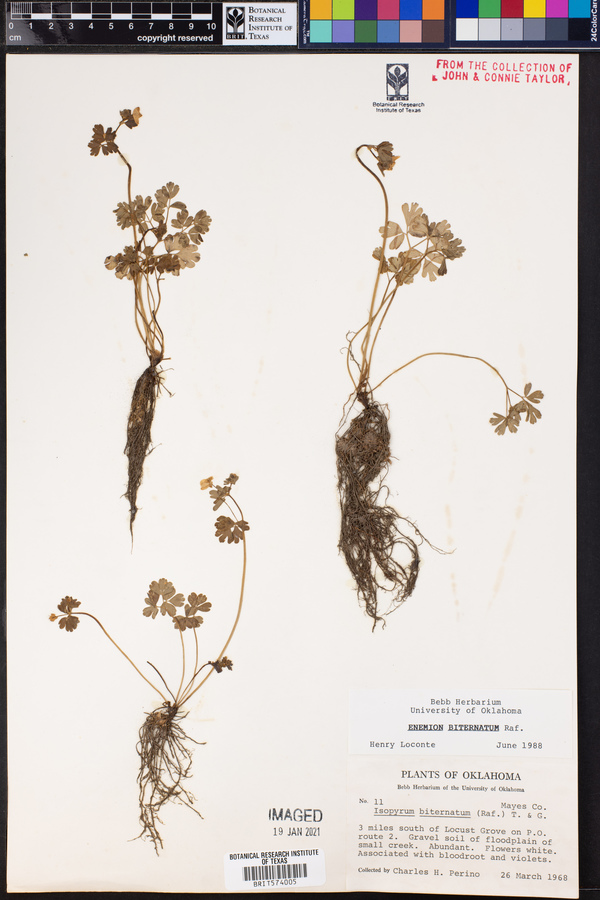|
Family: Ranunculaceae |
Herbs , perennial, from stout woody rhizomes or tuberous roots. Leaves basal and cauline, proximal leaves petiolate, distal leaves sessile or nearly so; cauline leaves alternate. Leaf blade 2-ternately compound; leaflets broadly ovate to cuneate-obovate, margins entire to deeply 3-notched. Inflorescences terminal or axillary, 2-10-flowered cymes or racemes or flowers solitary, to 4 cm; bracts absent. Flowers bisexual, radially symmetric; sepals not persistent in fruit, 5(-9), white, occasionally tinged pinkish, plane, ovate to obovate, 3.5-15 mm; petals absent; stamens 9-75; filaments filiform to clavate or narrowly triangular; staminodes absent between stamens and pistils; pistils [1-]2-10, simple; ovules 2-6 per pistil; style present. Fruits follicles, aggregate, sessile or stipitate, oblong or elliptic to obovate, laterally compressed, sides with a few prominent veins and transverse veinlets; beak terminal, straight or curved, 0.5-3 mm. Seeds reddish brown, ovoid, smooth, rugulose, or minutely pubescent. x = 7. The delimitation of taxa within tribe Isopyreae Schrödinger has been open to considerable debate. North American taxonomists tend to retain the North American species in Isopyrum Linnaeus whereas taxonomists elsewhere recognize Enemion along with a number of other segregate genera [e.g., Dichocarpum (Tamura and Kosuge) W. T. Wang and Fu D.-Z., Isopyrum in the strict sense, Leptopyrum Reichenbach, and Paraquilegia Drummond and Hutchinson] (J. R. Drummond and J. Hutchinson 1920; Fu D.-Z. 1990; M. Tamura 1984, 1993; M. Tamura and L. A. Lauener 1968). Enemion has no petals and is regarded as the most primitive member in tribe Isopyreae (D.-Z. Fu 1990; M. Tamura 1984; M. Tamura and L. A. Lauener 1968). The other closely related genera form a transition series: Dichocarpum has peltate petals similar to the stamens; Isopyrum and Leptopyrum possess peltate petals with larger, tubular limbs and shorter claws; and Paraquilegia has nonpeltate petals that are flat and ± concave or swollen near the base and nearly sessile. While some authors have argued that too much emphasis has been placed on petals as characters for segregating genera (e.g., J. A. Calder and R. L. Taylor 1963), Enemion is a well-defined taxon, easily distinguished from other members of tribe Isopyreae. Final decisions involving the circumscription of Enemion await molecular study involving all members of subfamily Isopyroideae Tamura. All species of Enemion in the flora, with the exception of E . biternatum , are localized endemics of western North America from British Columbia to California.
|


